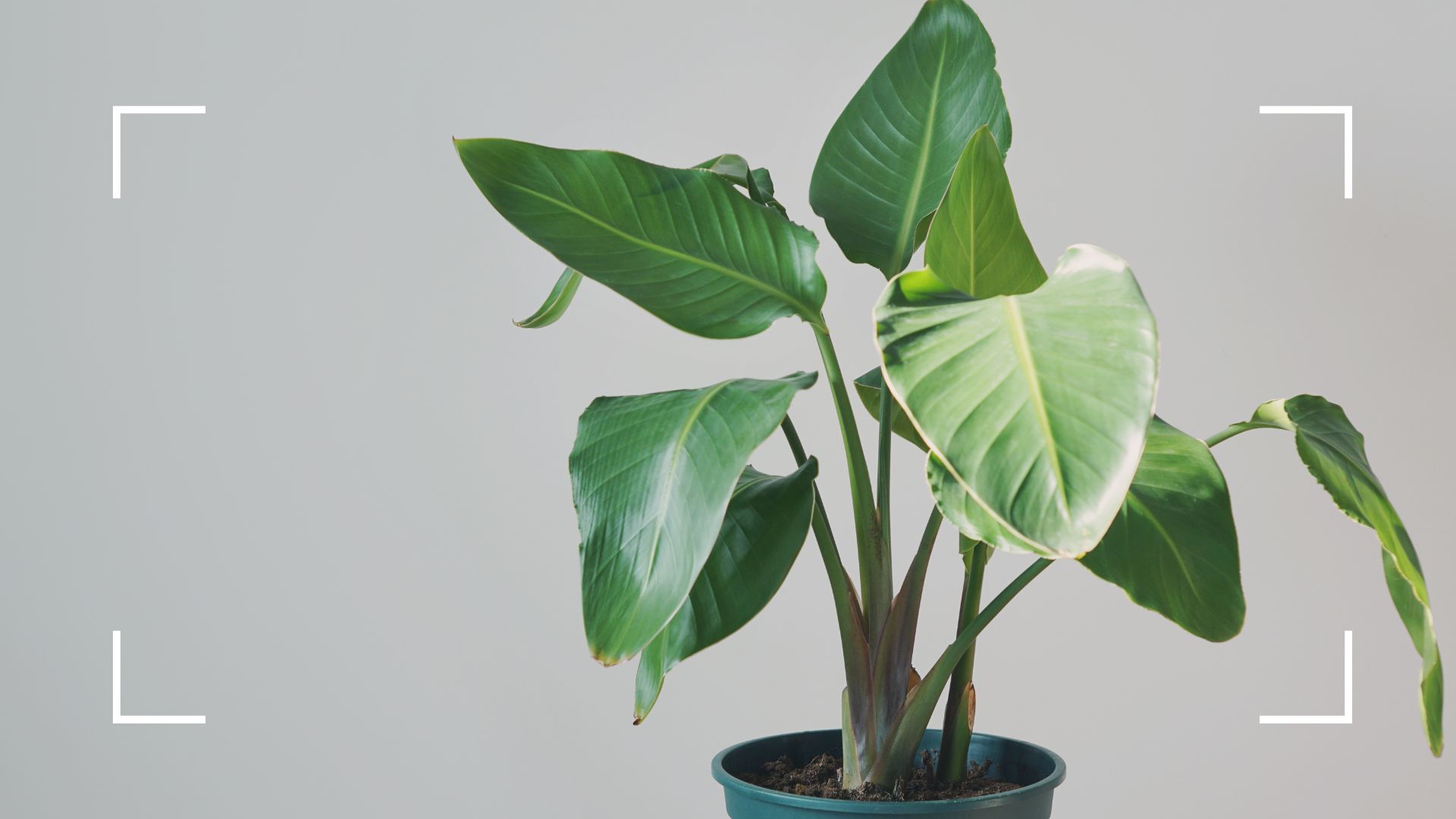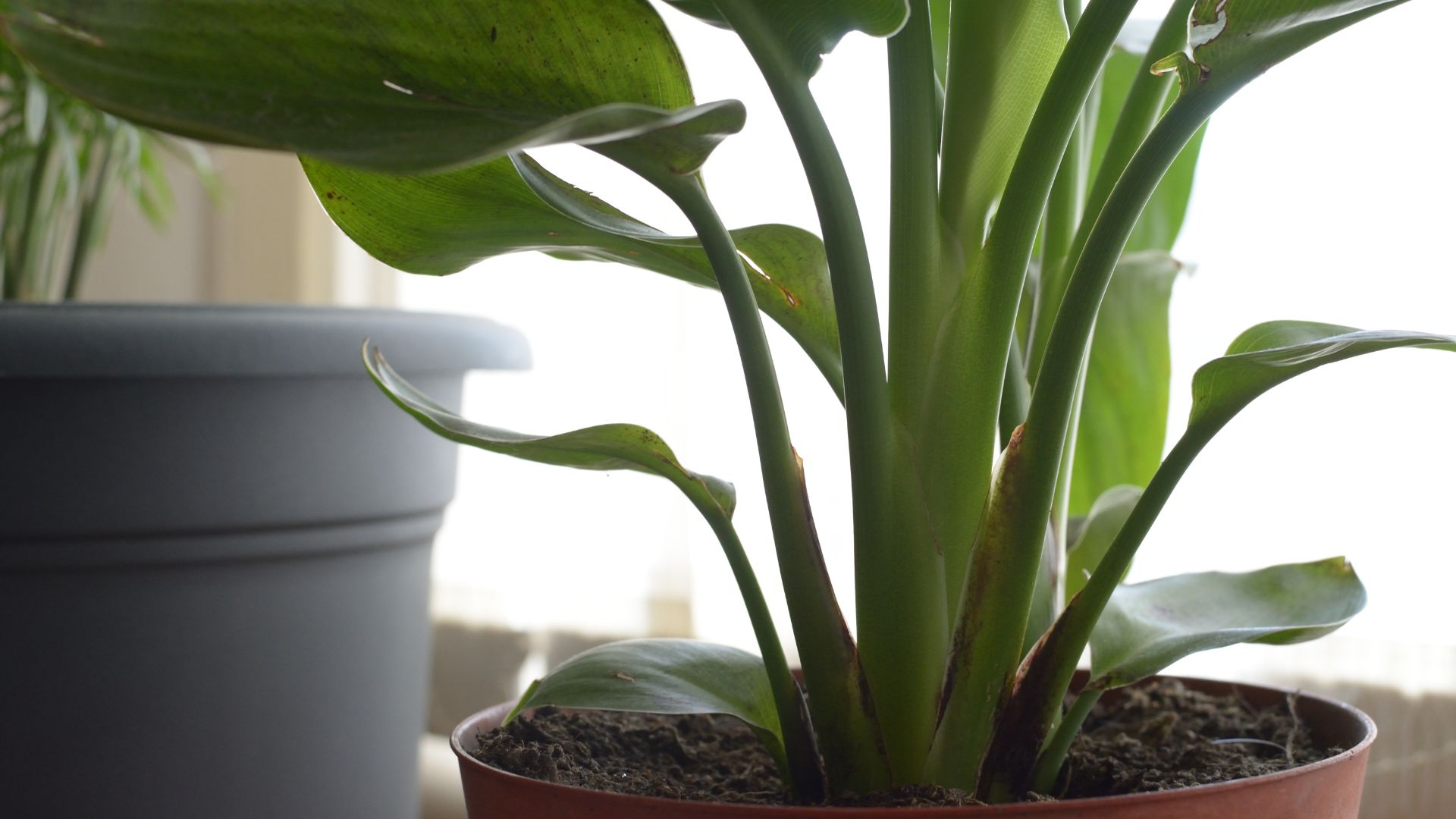
Some plant species can bring a whole new level of exoticness to your home, with the bird of paradise plant being a great example of one. But how can you keep this unique leafy friend happy? We put it to the experts.
Taking care of any indoor plants that help your health and well-being can prove to be difficult, even when it's a common species like a snake plant. So you would assume that more exotic plants like the bird of paradise might be near impossible to look after.
Whilst it isn't exactly one of the easiest houseplants to keep alive, the bird of paradise has a somewhat straightforward care plan, you will just need to follow these expert recommended steps.
How to care for a bird of paradise Plant: 5 easy steps
Whether you're a professional plant parent or just starting with your leafy collection, all must know some basic plant care rules. And whilst knowing how to care for a monstera may not help you with caring for a bonsai tree, there are some similarities across species.
Bird of Paradise plants are definitely unique in the way they look and how they like their conditions to be met. With its large blue-grey, paddle-like leaves it can grow very tall and will need plenty of room. You can grow the plant outdoors in the summer but always get the South African species back indoors when the cold weather hits.
Here's a step-by-step guide to care for your bird of paradise plant all year round...
1. Watering

Knowing how often you should water your indoor plants is one of the most important parts of being a plant parent. And whilst you may think that underwatering is the biggest risk, overwatering your plant can lead to just as many issues.
"Keep the soil moist, but not soggy. It's time to water when the top layer of the soil feels dry and in winter, water it less because the plant grows much slower. To prevent root rot, make sure the pot has good drainage," explains Jane Dobbs, lead gardener at Allan's Gardeners.
Setting up a watering routine that suits your plant's needs it's the easiest way to keep on track and ensure your bird of paradise is sufficiently watered at all times.
2. Sunlight exposure
One of the most common houseplant mistakes is placing your plant directly in the sun permanently and thinking it'll be good for it. Plants, of course, need the sun and the vitamins it provides to live but too much of a good thing can be fatal for your plant.
Jane says, "It likes bright, indirect light. Also, they can handle some direct sun, but too much can scorch their leaves. When growing indoors, put them near a window that gets filtered light. Ideally, you should pick a spot near a window with sheer curtains or in a well-lit room."
Most plants don't like lots of direct light and it can be one of the reasons that your peace lily's leaves are turning brown.
3. Humidity

Now because this plant is native to South Africa, it prefers a much warmer humid environment. These conditions aren't easy to naturally replicate in the UK all year round, however, there is a foolproof way to provide that humidity.
Graham Smith MCIhort, gardening expert at LBS Horticulture, says, "To keep the plant's environment humid, you should keep the pot in a tray of pebbles and water or mist it daily."
This would be the ideal plant to help with condensation or to reduce humidity in a bathroom. You could also invest in a humidifier for your plant, just a small model that won't undo all the hard work your best dehumidifier is doing for your home.
4. Fertilising
Whilst fertilising can be quite low on the priority list when caring for a venus fly trap or other self-sustaining plants, the bird of paradise will benefit from it.
"Feed the plant with a balanced fertiliser every 2-4 weeks during the growing season which is the spring and summer months. During autumn and winter, cut back on feeding," explains Jane.
5. Potting and soil

When it comes to how to repot the plant or even how to know when to repot the plant there are some signs and rules to follow that will massively help you with the process.
Jane says that you will need well-draining potting soil and she recommends using a tropical plant mix or a combination of peat, perlite, and pine bark. Luckily you'll only need to repot your plant every 2-3 years or whenever the pot gets far too small.
"A bird of paradise plant will cope well when slightly pot-bound, as in their roots fit snugly in the pot, and only need to be repotted when the roots appear at the top of their compost. In spring, repot the plant into a slightly larger pot. If your plant does not need to be repotted, you should still change the top layer of compost with a fresh layer every spring," explains Graham.
FAQs
How do I know if my bird of paradise plant is happy?
Caring for plants indoors and outdoors can be a challenge, especially when you don't know if you're actually doing a good job. Some plants won't show you their ill-health until it's too late and others will be truly thriving without you realising.
"Large, vibrant green leaves are a good sign. Firm and glossy is what you want. Leaves that are yellowing or browning might be overwatered, underwatered, or not getting enough light. Birds of Paradise that are happy will produce new leaves regularly. You should see healthy new growth that looks like the rest of the plant," says Jane.
"This plant produces exotic, distinctive flowers if conditions are right. Plants that bloom regularly are well-cared for, but they might not bloom indoors or if they're still growing," she continues.
The leaves of the plant should have smooth edges and not be crispy or curled. Similar to why a monstera may have brown edges, the leaves can crisp from low humidity or too much direct sun.

How long do bird of paradise plants live?
Unlike some of the hardest plants to keep alive which might seem to die on you rather shockingly, a bird of paradise plant can be a long-term companion.
Jane says, "Indoor Bird of Paradise plants usually live for 5 to 10 years. When they're taken care of right, they can live a long time, but their growth may slow down. Bird of Paradise plants can live for decades outdoors, often reaching 20 years or more with good care."
Birds of paradise that grow in their native land or are particularly well cared for can live for over 50 years.
How big can a bird of paradise plant get?
If you want to make your small room look bigger then buying a bird of paradise plant may not be the way forward. This species can grow up to two metres tall and their leaves can grow outwards which means they need plenty of space to happily thrive.
It's important to note that your bird of paradise plant might not show any sign of flowering for a few years and this doesn't mean that it's unhappy.
Graham says, "A bird of paradise can sometimes take three to four years to bloom, and usually flower in late winter or spring. It will only flower if it receives enough sunlight and is given plant food, and can flower better if it is slightly pot bound."







